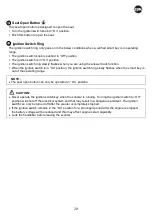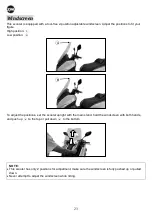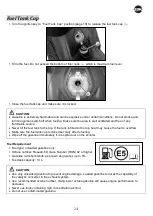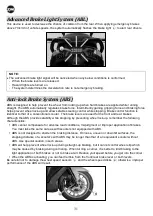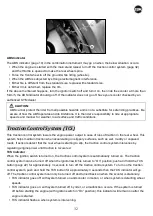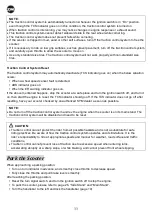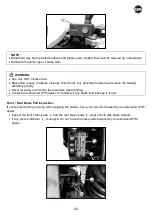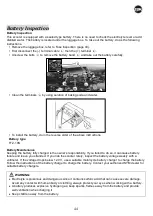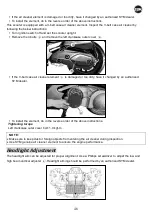
Advanced Brake Light System (ABL)
This device is used to decrease the chance of collision from the rear. When applying emergency brakes
above 70 km/h of vehicle speeds, the system automatically flashes the brake light
○
A
to alert rear drivers.
Anti-lock Brake System (ABS)
ABS is designed to help prevent the wheel from locking up when hard brakes are applied while running
straight. The ABS automatically regulates brake force. Intermittently gaining gripping force and braking force
helps prevent wheel lock-up and allows stable steering control while stopping. Brake control function is
identical to that of a conventional scooter. The brake levers are used for the front and rear brakes.
Although the ABS provides stability while stopping by preventing wheel lock-up, remember the following
characteristics:
ABS cannot compensate for adverse road conditions, misjudgment or improper application of brakes.
You must take the same care as with scooters not equipped with ABS.
ABS is not designed to shorten the braking distance. On loose, uneven or downhill surfaces, the
stopping distance of a scooter
’s with ABS may be longer than that of an equivalent scooter without
ABS. Use special caution in such areas.
ABS will help prevent wheel lock-up during straight-up braking, but it cannot control wheel slip which
may be caused by braking during cornering. When turning a corner, it is better to limit braking to the
light application of both brakes or not to brake at all. Reduce your speed before you get into the corner.
When the ABS is activating, you can feel tremble from the front/rear brake lever or both levers.
Be careful not to damage the wheel speed sensors
○
A
and the wheel speed disks
○
B
; otherwise, improper
performance of the ABS will result.
NOTE :
The advanced brake light signal will be canceled when any below conditions is conformed.
-
When the brake levers are released.
-
Hazard lights are turned on.
-
The system determines the deceleration rate is not emergency braking.
○
B
○
A
○
A
31




